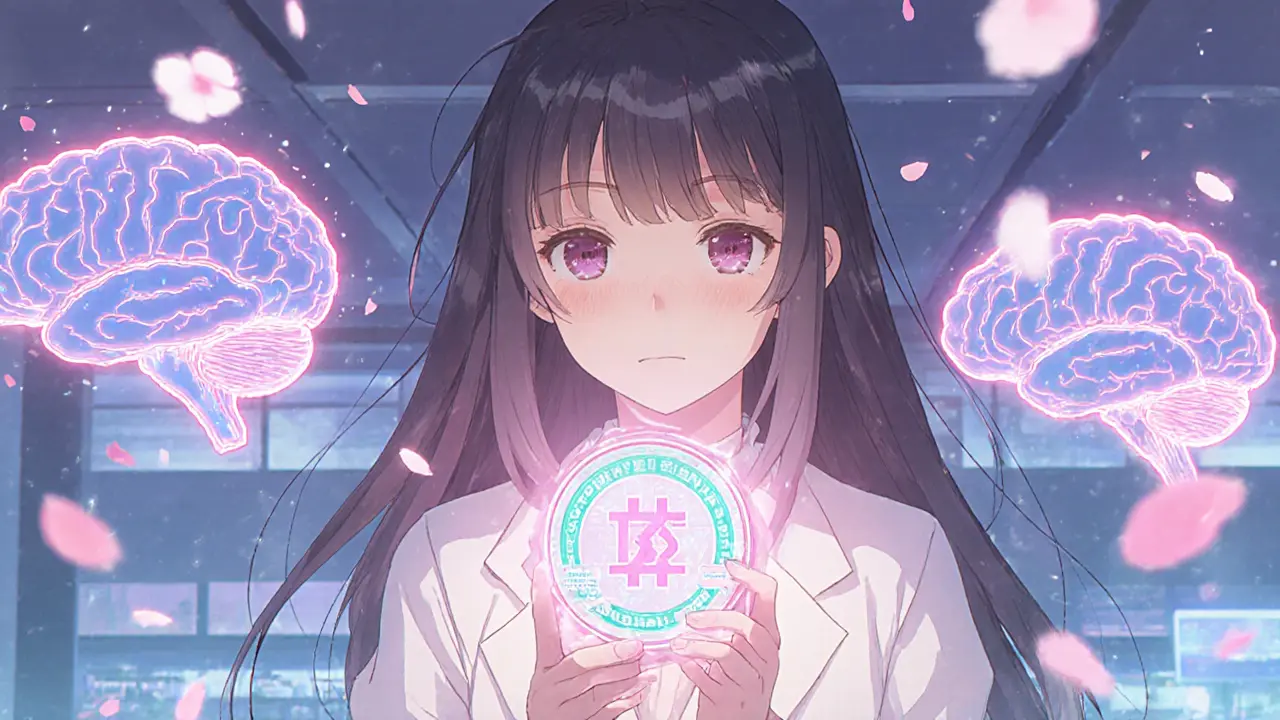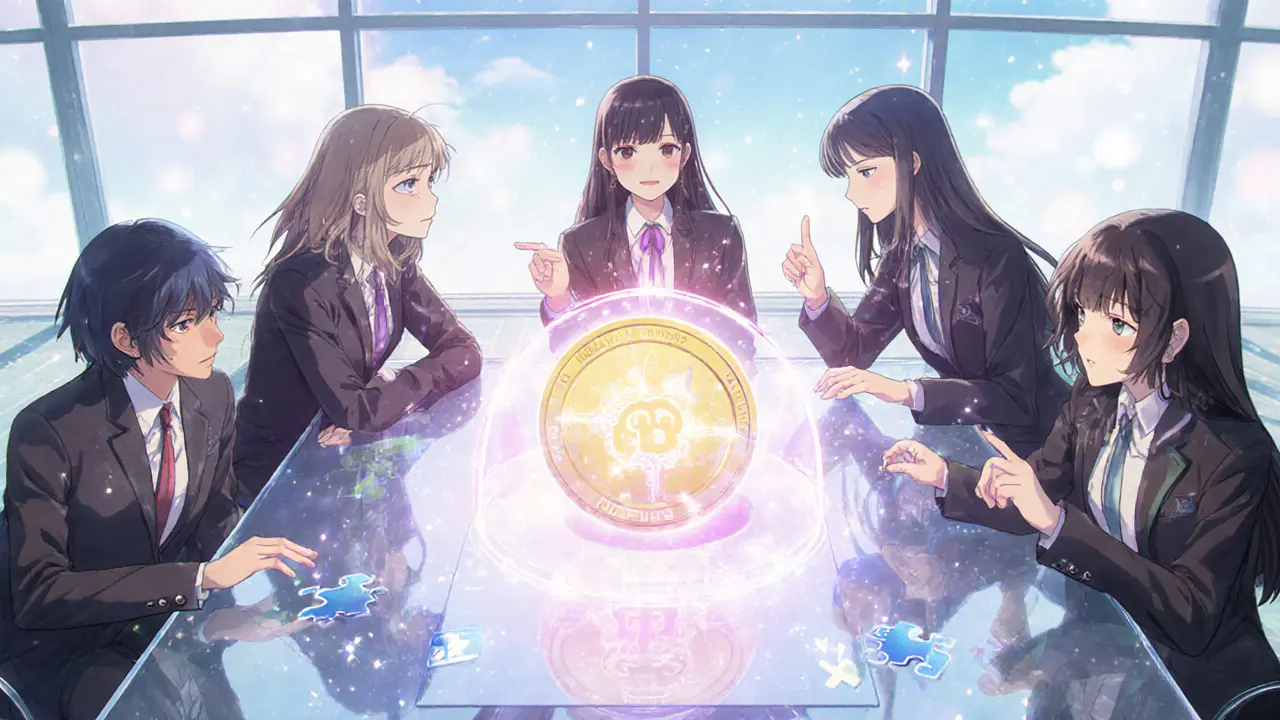Cerebrum DAO (NEURON) Explained: Crypto Coin Overview

NEURON Token Market Analyzer
Token Metrics
Max Supply
86,000,000,000 NEURON
Circulating Supply
26,033,552,354 NEURON
Current Price
$0.0002906
Market Cap
$7,446,893
24h Volume
$189,710
7-day Change
+55.26%
Price Prediction Simulator
Predict future price based on historical trends
Market Analysis
The token's liquidity is moderate, with a 24-hour volume-to-market-cap ratio of about 2.5%. Price swings are typical for low-cap crypto assets.
Chart visualization would appear here (not implemented in this demo)
If you’ve stumbled on the name Cerebrum DAO while scrolling through crypto news, you’re probably wondering what it actually does and whether it’s worth a glance. In short, it’s a niche blockchain project that aims to fund neuroscience research using a community‑governed token called NEURON. Below you’ll get a clear picture of the DAO’s purpose, how the token works, its market stats, and what owning NEURON could mean for you.
Quick Summary
- Cerebrum DAO is a BioDAO focused on neurodegenerative‑disease research.
- NEURON is both a governance and utility token with a max supply of 86billion.
- The token powers IP‑NFT and IPT mechanisms that fractionalize research assets.
- Holders can vote, get early access to token sales, and eventually receive discounted therapeutics.
- Current price is ~US$0.00029 with high volatility; long‑term forecasts are modestly bullish.
Let’s break each piece down so you can decide if the project fits your crypto or impact‑investing goals.
What is Cerebrum DAO?
Cerebrum DAO is a decentralized autonomous organization built specifically to fund and accelerate neuroscience research, especially for neurodegenerative diseases. The DAO operates as a BioDAO, a sub‑category of DAOs that focus on scientific and health‑related initiatives. Its mission is to democratize research funding by letting token holders decide which projects receive money, how those funds are allocated, and how any resulting intellectual property is managed.
How Does the NEURON Token Work?
NEURON is the native token of Cerebrum DAO, serving two core purposes:
- Governance: Holders can vote on proposals ranging from research project selection to treasury policy changes.
- Utility: Token owners gain exclusive rights to participate in IP‑NFT sales, purchase fractionalized Intellectual Property Tokens (IPTs), receive discounts on brain‑health products, and, eventually, obtain privileged access to approved therapeutics.
The token’s symbolism is intentional: 86billion tokens match the estimated 86billion neurons in an average human brain, reinforcing the project's scientific focus.
Token Economics at a Glance
| Metric | Value |
|---|---|
| Maximum Supply | 86,000,000,000 NEURON |
| Circulating Supply | 26,033,552,354 NEURON (≈30.3%) |
| Current Price | US$0.0002906 |
| Market Capitalization | US$7,446,893 |
| 24‑hour Volume | US$189,710 |
| 7‑day Change | +55.26% |
The token’s liquidity is moderate, with a 24‑hour volume‑to‑market‑cap ratio of about 2.5%. Price swings are typical for low‑cap crypto assets, so investors should be comfortable with volatility.

IP‑NFTs and IPTs: Fractionalizing Research Assets
IP‑NFT stands for Intellectual Property Non‑Fungible Token. When the DAO backs a research project, it mints an IP‑NFT that encapsulates the project’s underlying patents, data, and milestones. Once key milestones are hit, the IP‑NFT can be split into many IPTs (Intellectual Property Tokens). Each IPT represents a fractional share of the project’s future revenue or licensing income.
This model gives two major benefits:
- Targeted Funding: Investors can back the exact study they believe in, rather than a generic research pool.
- Liquidity: IPTs trade on secondary markets, letting holders exit partially without dismantling the whole project.
Cerebrum DAO retains a large portion of the IPTs, ensuring the organization stays aligned with the long‑term success of the research portfolio.
Real‑World Utility for Token Holders
Beyond voting, NEURON offers concrete perks:
- Early Access to Token Sales: NEURON holders get the first chance to buy IPTs when new IP‑NFTs are fractionalized.
- Discounted Brain‑Health Products: Partnered supplements, wearables, or diagnostic kits are sold at reduced rates to token owners.
- Therapeutic Priority: When a funded research project reaches regulatory approval, long‑term NEURON holders receive the first batch of the approved drug at a discounted price.
These utilities create a tangible link between crypto ownership and health outcomes, a rarity in the broader market.
Roadmap, Forecasts, and Price Outlook
Technical analysts from platforms like TradingBeasts and LiteFinance predict modest upside for NEURON over the next few years. The median 2029 price estimate hovers around US$0.000136-0.000145, representing a 2-3% annual increase from current levels. This slow‑and‑steady trajectory reflects the niche nature of the project - growth is tied to real‑world scientific milestones rather than pure market speculation.
Key upcoming milestones include:
- Completion of the first IP‑NFT fractionalization (Q42025).
- Launch of a public IPT marketplace (Q22026).
- First therapeutic candidate entering PhaseII clinical trials (2027).
If these targets are hit, the token could benefit from both increased demand for IPTs and the prestige of delivering a marketable treatment.
Risks and Considerations
Investing in Cerebrum DAO isn’t risk‑free. Major challenges include:
- Scientific Uncertainty: Research can fail, delaying or nullifying expected returns.
- Regulatory Hurdles: Approvals for neuro‑degenerative therapies are notoriously tough.
- Liquidity Constraints: IPT markets are nascent; selling large positions could impact price.
- Governance Capture: If a small group accumulates a majority of NEURON, they could steer decisions away from community interests.
Prospective holders should treat NEURON as a blend of impact investment and speculative crypto asset.
How to Acquire NEURON
NEURON is listed on several decentralized exchanges (DEXs) that support the Ethereum and Binance Smart Chain ecosystems. To acquire:
- Set up a non‑custodial wallet (MetaMask, Trust Wallet, etc.).
- Deposit ETH or BNB for gas fees.
- Connect the wallet to a DEX that lists NEURON (e.g., Uniswap, PancakeSwap).
- Swap your base token for NEURON, then store them safely.
After purchase, you can stake NEURON on the DAO’s governance portal to start voting. Remember to keep private keys offline for added security.

Frequently Asked Questions
What makes Cerebrum DAO different from other crypto projects?
Cerebrum DAO ties token ownership to real scientific outcomes. Its IP‑NFT/IPT model lets holders fund specific research, earn a share of future IP revenue, and obtain discounted therapeutics-features rarely seen outside traditional biotech funding.
How can I vote with NEURON?
After connecting your wallet to the Cerebrum DAO governance dashboard, proposals appear as voting polls. Each NEURON token equals one vote, and you can allocate voting power across multiple proposals in a single voting period.
What are the tax implications of holding NEURON?
Tax treatment varies by jurisdiction. In Australia, crypto gains are generally treated as capital gains. Rewards from voting or IPT dividends may be considered ordinary income. Consult a tax professional for personalized advice.
Can I trade IPTs on regular crypto exchanges?
Currently, IPTs trade on specialized secondary markets built by Cerebrum DAO. They are not listed on major CEXs yet, but the roadmap includes integration with broader DEX aggregators by 2026.
What happens if a funded research project fails?
If a project does not meet its milestones, the DAO may reallocate remaining funds to other proposals. IPT holders could see their fractional shares de‑value, but the broader token ecosystem remains intact because governance controls redistribution.
Christina Lombardi-Somaschini
Having examined the NEURON token metrics, one observes that the circulating supply presently approximates 26 billion units, whereas the maximum supply stands at an impressive 86 billion, a figure chosen deliberately to mirror the estimated neuronal count in the human brain; this symbolic alignment underscores the project's scientific ethos, and it further implies a considerable degree of token dilution pending future emissions; the current market capitalization hovers around $7.4 million, which, when juxtaposed with a daily trading volume of roughly $190 k, yields a volume‑to‑market ratio of approximately 2.5 %, a ratio that, while modest, suggests sufficient liquidity for modest position sizing; however, investors should remain cognizant of the inherent volatility characteristic of low‑cap assets, as evidenced by the recent 55 % weekly price appreciation, which may not be sustainable absent substantive research milestones.
katie sears
The DAO’s governance model aligns token voting power directly with research funding decisions.
Gaurav Joshi
Backing a project that funds brain disease research is the right thing to do and anyone who ignores that is missing the point
Kathryn Moore
NEURON’s utility token is used for voting and accessing IP‑NFTs which represent research patents
Christine Wray
IP‑NFTs create a novel bridge between crypto and biotech.
roshan nair
When you stake NEURON on the governance portal you earn voting rights, plus you can earn early access to IP‑NFT sales – just make sure you lock your wallet securely and don’t forget to double‑check the contract address before swapping.
Jay K
It is imperative that participants verify contract authenticity to mitigate phishing risks, thereby preserving the integrity of the DAO’s tokenomics.
Kimberly M
Love the idea of getting discounted brain‑health products with NEURON 😊
Navneet kaur
Is it even real science or just hype
Marketta Hawkins
Sure, a crypto token can fund neuroscience, but let’s hope the hype doesn’t drown out real research 😒
Drizzy Drake
Reading through the NEURON overview, I was initially struck by the ambition of marrying decentralized finance with neurodegenerative research. The concept of fractionalizing intellectual property via IP‑NFTs is innovative, yet it raises questions about regulatory compliance that are not fully addressed in the whitepaper. Moreover, the token’s market cap of under $8 million places it squarely in the high‑risk, high‑reward category, meaning that retail investors should be prepared for significant price swings. While the 55 % weekly gain appears impressive, such momentum is often driven by speculative trading rather than substantive progress in the lab. The roadmap lists a Phase II trial in 2027, which is an optimistic timeline given the typical duration of clinical development. If the DAO can successfully navigate FDA approvals, the downstream utility of NEURON could increase dramatically, especially with the promised discounted therapeutics. However, the success of the IP‑NFT marketplace depends on building sufficient liquidity, a challenge for any nascent token. I also appreciate the governance mechanism that allows token holders to vote on research proposals; this democratization could lead to a more diverse portfolio of studies. Still, there is a risk of governance capture if a small number of whales accumulate disproportionate voting power. The discussion of IPTs as revenue‑sharing instruments is compelling, but the legal nuances of profit distribution from patents are complex. Investors should examine the smart contract code for any hidden clauses that could affect token holders’ rights. In addition, the token’s supply dynamics-86 billion maximum versus roughly 30 % circulating-mean that future inflation could dilute existing positions. Stakeholders must therefore consider both the scientific milestones and the tokenomics when assessing long‑term value. Overall, NEURON presents a fascinating experiment at the intersection of crypto and biotech, but it demands thorough due diligence and a tolerance for uncertainty. I would advise anyone interested to keep a close eye on the DAO’s actual research outputs and not be swayed solely by token price movements.
AJAY KUMAR
The rise of NEURON feels like a seismic tremor shaking the foundations of both crypto and medicine!
bob newman
Oh great, another token promising to cure diseases while you’re still figuring out how to avoid the rug pull-how original.
Anil Paudyal
Liquidity will be the make‑or‑break factor for NEURON.
Kimberly Gilliam
Looks like a fancy hype train to me.
Jeannie Conforti
Good stuff, keep the community updated on research progress.
tim nelson
While the vision is solid, the execution must prove it-not just hype and tokenomics.